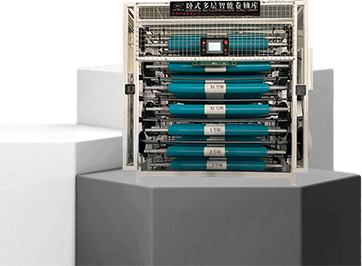Technical parameters of special forklift for curing room
2019-03-08
Curing room forklift is an industrial transport vehicle, which refers to various wheeled transport vehicles for loading, unloading, stacking and short-distance transportation of palletized goods. The standardization organization ISO/TC110 is called industrial vehicles. It is often used for the transportation of large items in warehouses and is usually powered by a fuel engine or battery.
Technical Parameters
1. Rated lifting capacity: The rated lifting capacity of the curing room forklift refers to the weight of the cargo that is allowed to be lifted when the distance from the center of gravity of the cargo to the front wall of the fork is not greater than the load distance, expressed in T (tons). When the center of gravity of the goods on the fork exceeds the specified load distance, due to the limitation of the longitudinal stability of the forklift in the curing chamber, the lifting weight should be reduced accordingly.
2. Load distance: Load distance refers to the horizontal distance T from the center of gravity to the front wall of the vertical section of the fork when a standard cargo is placed on the fork, expressed in mm (millimeters). For 1T to 4T curing room forklifts, the specified load distance is 500mm.
3. Lifting height: Lifting height refers to the vertical distance between the upper surface of the horizontal section of the fork and the horizontal ground where the curing room forklift is located on a flat and solid ground, when the curing room forklift is fully loaded and the goods are raised to a designated position.
4. Mast inclination angle: Mast inclination angle refers to the forward or backward inclination angle of the mast relative to its vertical position when the unloaded curing room forklift is on a flat and solid ground. The function of the forward inclination angle is to facilitate the forklift and unloading of goods; the function of the rear inclination angle is to prevent the goods from slipping off the forks when the forklift in the curing room is running with goods. Generally, the forward inclination angle of a forklift in the curing chamber is 3°~6°, and the rear inclination angle is 10°~12°.
5. Lifting speed: The lifting speed of the forklift in the curing room usually refers to the speed at which the goods are lifted when the forklift in the curing room is fully loaded, expressed in m/min (meters per minute). Increasing the lifting speed can improve operating efficiency, but if the lifting speed is too fast, cargo damage and machine damage accidents are prone to occur. The lifting speed of domestic curing room forklifts has been increased to 20m/min.
6. Driving speed: Increasing the driving speed has a great impact on improving the operating efficiency of the forklift in the curing room. For an internal combustion curing chamber forklift with a lifting capacity of 1T, the traveling speed when fully loaded shall not be less than 17m/min.
7. Turning radius: When the curing room forklift is driving at low speed without load and turning with the steering wheel full, the distances from the outside and inside of the vehicle body to the turn are called the outside turning radius Rmin and the inside turning radius rmin respectively. The smaller the outer turning radius, the smaller the ground area required for the curing room forklift to turn, and the better the maneuverability.
8. Ground clearance: Ground clearance refers to the distance from the fixed low point on the vehicle body to the ground other than the wheels. It represents the ability of the forklift in the curing room to cross raised obstacles on the ground without collision. The smaller the ground clearance, the higher the passability of the forklift in the curing room.
9. Wheelbase and wheelbase: The wheelbase of the curing room forklift refers to the horizontal distance between the front and rear bridge lines of the curing room forklift. Wheelbase refers to the distance between the left and right wheels on the same axis. Increasing the wheelbase is beneficial to the longitudinal stability of the curing chamber forklift, but it increases the body length and the minimum turning radius. Increasing the wheelbase is beneficial to the lateral stability of the curing room forklift, but it will increase the overall width of the body and the smaller turning radius.
10. The minimum width of the right-angle channel: The minimum width of the right-angle channel refers to the minimum width of the channels that intersect at right angles for forklifts in the curing room to travel back and forth. Expressed in mm. Generally, the smaller the width of the right-angle channel, the better the performance.
11. The minimum width of the stacking channel: The minimum width of the stacking channel is the minimum width of the passage when the forklift in the curing room is operating normally.
Related News
Pay attention to these points when charging a four-wheel electric forklift
Precautions for using intelligent plastic curing chamber
High-speed automatic winding machine operating procedures
How to distinguish between slitting machine and cross-cutting machine

Pay attention to these points when charging a four-wheel electric forklift
Pay attention to these points when charging a four-wheel electric forklift

Precautions for using intelligent plastic curing chamber

High-speed automatic winding machine operating procedures
High-speed automatic winding machines are widely used in the assembly cost of foreign trade exports, food and beverages, plastic chemicals, glass ceramics, electromechanical castings and other products.

How to distinguish between slitting machine and cross-cutting machine
Slitting machines and cross-cutting machines are both used for slitting items, but they are essentially different.
Contact
You can contact us in the following four ways, and we will communicate with you immediately upon receiving your inquiry!
1. Call us.
2. Send an email.
3. Leave a message.
4. Add WeChat or WhatsApp.







